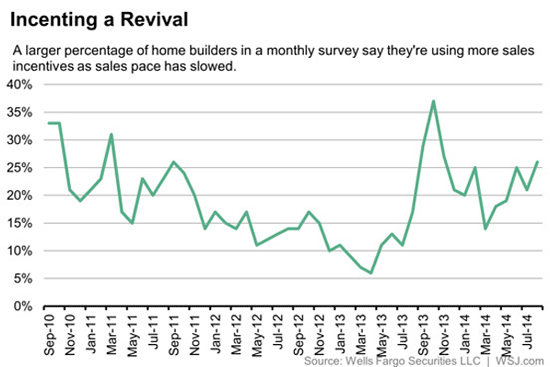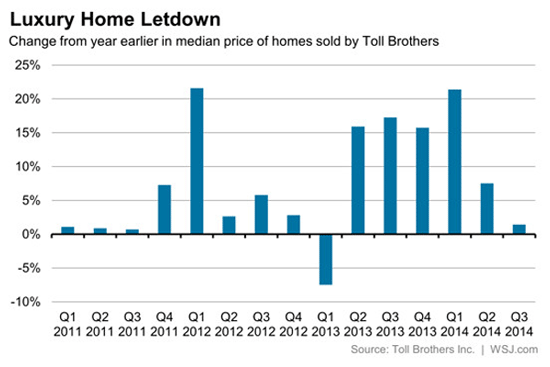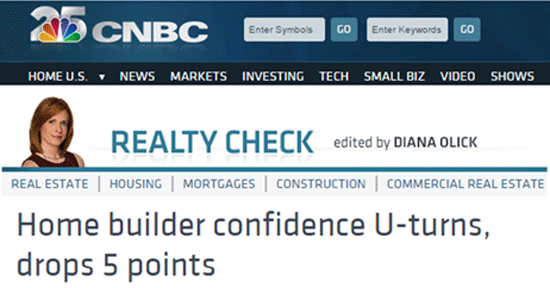Real Estate

The chart above shows the average detached housing prices for Vancouver, Calgary, Edmonton, Toronto, Ottawa* and Montréal* as well as the average of Vancouver, Calgary and Toronto condo (apartment) prices (Left Axis). On the right axis is the MLS Annual Total Residential Sales across Canada; the most recent data point being a projection to year end.
In October 2014 Toronto single family detached average prices hit new historical highs on Absorption Rates that are the highest among Canada’s 6 biggest cities. Look also at the total MLS sales across Canada which are projecting the biggest single year since the 2008-2009 plunge. It’s been a banner year for sales.
Meanwhile Edmonton, Ottawa and Montreal prices ticked down in their flat channels along with Calgary prices that dropped with the energy patch selloff while Vancouver ticked up inside Bull Horse Mt.
It remains interesting to note that the combined average price of a Vancouver, Calgary & Toronto condo is currently 25% more expensive than a median priced Montreal SFD and note also that in the spring of 2006, those 3-City average condos zoomed 58% in price (over $100,000) in just 3 months as the buy side of the market freaked out over the inversion of the 10yr less the 2yr spread as it went negative (Yield Curve).
Mattress money has gushed into condos with no respect for fundamentals or plan for contingencies that may be required if Pit of Gloom II develops and one must write off capital gains and rely on employment earnings.


For Canadians, a topic of conversation that comes up often is the housing market. More specifically, whether or not Canada is in a bubble – and if so, will it burst?
It is no secret that Canada has some of the highest real estate prices in the world. Real estate prices were not even slightly slowed by the late 2000s global recession; in fact, they kept climbing higher and higher. All while Canada’s neighbour to the south experienced a dramatic drop and has only now recovered. Even more interesting, America’s
average household debt fell after the recession, but Canada’s continues to rise. This is a very concerning thought.
Some attribute this to Canada having stronger fiscal health, a more stable banking system and the fruitful natural resources industry. Others say that Canada is set to experience a massive cooling down phase, one that would bring a drastic decline in housing prices.
Let’s narrow in on Canada’s West Coast oasis, Vancouver. Vancouver has a reputation for being one of the most expensive cities in the world in regards to housing prices and overall cost of living. In fact, when compared to other Canadian cities’ real estate, in some cases, Vancouver is more than double in cost per square foot. A million dollars will get you a cozy 1,500 square foot condo in Vancity. But the same million will get you 1,600 square feet in Toronto, 2,700 square feet in Montreal, and almost 3,800 square feet in Quebec City,
Outspoken economist, Doug Casey, seems to agree with the sentiment of Canada being overpriced, “ It’s a good time to leave Canada, since its property is quite overpriced by almost any standard – especially in Vancouver, BC.” Mr. Casey believes that Canada will suffer a similar fate as America, since Canadian banks are behaving in similar, generous fashion as their American counterparts did in the early 2000s. He also has dubbed Canada as “USA-lite.”
Will the old saying, “what goes up, must come down,” apply to Canada’s housing market or is this just the new reality of the Great White North?
Sources:
- The Huffington Post – How Much Condo You Can Get For $1 Million In These Cities
- The Economist – Live Chart – Parting Company
- International Man – Doug Casey – Let’s Do A Tour Around The World

Michael interviewed cross border insurance expert David Macfarlane on the surprising, and often unknown, liabilities that Canadian snowbirds face with their home, medical, travel and auto protections. Hear some shocking stories and some ideas on how to enjoy your winter sojourns to the US with greater security. CLICK BELOW to listen to the full interview.
{mp3}grant/daveinterview{/mp3}
Managing Director of Business Development, Dave works with HUB International’s Western Canada operations specializing in real estate, executive risk, senior care facilities, hotels and hospitality, manufacturing, and commercial marine insurance.
And if you would like some help determining if you have the protection you need please call HUB’s toll free line 1-844-SNO-BIRD that’s 1-844-766-2473 or email them at snobird@hubinternational.com. Please include your phone # and hometown.

 … New report predicts market heat to continue well into 2015… Two-bedroom condos increasingly popular…
… New report predicts market heat to continue well into 2015… Two-bedroom condos increasingly popular…
New report predicts market heat to continue well into 2015, far from the end of market growth, at least in some parts of Canada. The annual Emerging Real Estate Trends report from the Urban Land Institute and PricewaterhouseCoopers says that Calgary, Edmonton, Toronto and Vancouver will continue to the “best bets” based on investment, housing and development.
….continue reading HERE
….related: Vancouver hit by dramatic drop in house values

Investing is about piecing together different bits of information into an illustrative picture—sort of a Wall Street version of the connect-the-dots game we played in kindergarten.
That’s why the headline below from Bloomberg made my investment antennae stand up and motivated me to look for either confirmation that the real estate market was indeed slowing down or contrary evidence to explain if the weak summer sales numbers were just a temporary aberration.
What that Bloomberg article showed was that home prices in 20 US cities increased at the slowest pace in almost two years ending in July, rising at an uninspiring annualized pace of 0.5%. Those are, by the way, the worst numbers since November 2011.
That’s a change from the healthy real estate gains that we’ve seen for two years, and there are lots of other reasons to think that real estate is headed for a rough patch, if not downright trouble.
Warning Sign #1: Worrywart Homebuilders
You know who knows more about real estate than the Gucci-wearing loafers on Wall Street? The people swinging the hammers and putting their own capital on the line with every real estate project they start.
The National Association of Home Builders index of builder confidence dropped by five points from 59 in September to 54 in October.
Each of the index’s three components were sharply lower in October: the current sales conditions index fell 6 points to 57, expectations for future sales fell 3 points to 64, and traffic of prospective buyers dropped 6 points to 41.
Warning Sign #2: Widespread Use of Sales Carrots
Surveys are useful but far from perfect. A better gauge of builder sentiment is how many incentives—such as upgraded cabinets, wood floors, and high-end appliances—they’ll include to close a deal.
Make no mistake: builders don’t give away incentives unless they have to and builders are giving away tens of thousands of dollars in incentives to goose slumping sales.
“Incentives have increased because builders aren’t selling as well as they would like. … Rather than reducing prices (outright), they use incentives,” said John Burns of real estate research firm John Burns Real Estate Consulting Inc.

A Wells Fargo survey of 150 homebuilders reported that that percentage of builders using incentives rose to 26% from 17% in August of 2013 and 21% in July of 2014.
Homebuilder Lennar admitted that it gave away incentives worth $20,400 per house last quarter. Moreover, that $20,400 amounted to 5.8% of the sales price. That’s a heavy hit on profits!
Warning Sign #3: Sales Slowdown
In a recent report, Toll Brothers warned Wall Street that its sales are slowing. Its sales contracts dropped by 4% in the last quarter and it now expects to sell 5,300 to 5,500 homes this year, down from its previous high-end forecast of 5,850 homes.

Moreover, as the above chart shows, home appreciation is now nonexistent and is threatening to turn negative.
Warning Sign #4: Profit Plunge Next?
Slumping sales and stagnant real estate prices are the precursor to profit disappointment. “Construction of single-family homes has been weak,” said CBRE Global Chief Economist Richard Barkham.
The first homebuilder profit warning was just delivered by KB Home, who is selling fewer and fewer homes. KB Home delivered 1,793 homes last quarter, down from 1,825 delivered in the same period a year ago.
That translated into weaker profits. KB Home reported earnings per share (EPS) of $0.28 on $589.2 million of revenue; however, Wall Street was expecting $0.40 EPS and $646.76 million of sales.
Warning Sign #5: Watch the Real Estate Food Chain
There is a lot more to the real estate industry than just homebuilders—the furniture industry, for example.
Stanley Furniture just reported its quarterly results and delivered a loss of $2.3 million and 5.0% drop in sales.
“The demand for upscale wood residential furniture in the industry’s traditional channels of distribution remains relatively weak,” warned CEO Glenn Prillaman.
My vegetable farmer father was one of those people that thought real estate prices would never go down. The 2008 financial crisis and accompanying real estate crash proved that wasn’t the case and the growing number of worrisome data points are warning me that stocks in all the parts of the real estate food chain could be headed for trouble.
Tony Sagami
30-year market expert Tony Sagami leads the Yield Shark and Rational Bear advisories at Mauldin Economics. To learn more about Yield Shark and how it helps you maximize dividend income, click here. To learn more about Rational Bear and how you can use it to benefit from falling stocks and sectors, click here.















